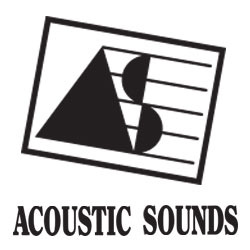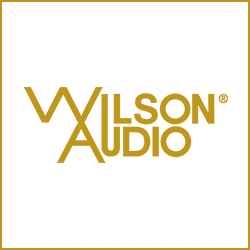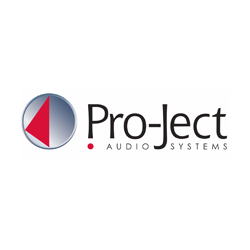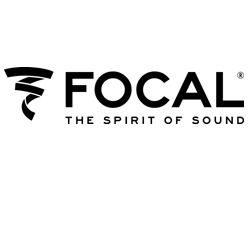To demonstrate that multi-channel sucks for pure music, just pull out any studio albums mastered for the original 4-channel formats, circa-1970. You and I know that this is fraudulent, though, because those recordings have the same validity relative to modern surround sound as, say, circa-’83 CD has to current CD. But using vintage SQ rather than the best of current surround material is precisely the sort of shabby, dishonest act I wouldn’t put past this hobby’s neurotic Luddites.
It wasn’t just that SQ, CD-4, et. al. only worked properly via 4-track open-reel tape, because retrieving four channels via LP was dicey at best; the hardware of the day precluded success. Neither was it that people were as mean about money and room space then as now. Alas, it’s all too easy to make surround sound a hardware issue, when the reality is that it’s equally a conceptual/philosophical issue. For open-minded listeners who consider surround beyond the cost of adding another pair of speakers (or possibly investing in another copy of the same disc), a huge part of the problem back then was that no-one knew what to do with the rear channels for recordings.
Anti-surround proselytisers will, of course, be careful not to try to prove their point with live albums, for even 30-year-old live sessions – acoustic or augmented by PA – benefit most from surround sound. Why? Because we’ve always accepted that acoustic spaces need re-creating: the concert venue, be it the Royal Albert Hall, the Fillmore East or Ronnie Scott’s, and the performance site dictates what to reproduce. True, some asshole can mess it up at the mixing desk, but most live recordings released commercially seem not to suffer gross butchery. What SQ and its fellow travellers – especially the Hafler array from which nearly all was derived prior to discrete multi-channel – did for live sets like the Allman Brothers’ was to allow drug-addled students with four-channel systems (yup, I was one…) to approximate the experience of a gig in their dorm rooms in all their PA-fold-back, audience-noise’d beauty.
It was revelatory.
This isn’t going to turn into another love letter to DTS, but I have to mention DTS because today it is the main source for CDs of First Quadrophony Era surround-sound material. You could, if you prefer, haunt record fairs for original LPs, but why bother? I still have some of the original vinyl, a vintage Sansui receiver with processing for every early 4-channel mode, and cartridges able to retrieve the matrix signal. Truth is: they simply don’t work very well. (What I don’t have are 4-track open-reel tape versions, which would produce the only valid A/B comparisons of SQ/QS/CD-4 versus discrete digital surround.) And these DTS CDs of older surround material should be mandatory listening for ALL budding engineers who will, in coming decades, be mastering for multi-channel: the good ones, like the Allman Brothers disc, show you what to do, while the stinkers, like , should act as a warning to Put Out That Joint.
One of the reasons why I’m here and you’re reading my drivel rather than vice versa is because I have a memory for trivia. Y’see, back in the early 1970s, I read every single word in the liner notes of every LP. Partly it was a quest for knowledge, but mainly it was the result of how a toke or two can cause you to find fascination in the sort of minutiae which even anoraks would ignore. As the Beach Boys’ Surf’s Up was released during the height of my initial audio indoctrination, I absorbed the insert’s technical notes; as I had access to a Dynaco “Quadaptor” AND a Marantz 4-channel receiver driving four ESS speakers, you can imagine how I reacted to the following:
“This recording has been produced so that it may be enjoyed in stereophonic sound or quadraphonically, using the Dynaco or EV-Stereo-4 systems.”
EV-Stereo-4? Eh, wha?!? But Dynaco I knew. And so, many a joint was consumed to a mock four channels of Surf’s Up. With rear channels derived from stereo via Hafler array, it was immune to the vagaries of or need for SQ/QS/CD-4 phono cartridges.
Then, in late-2000, Sunflower/Surf’s Up (Capitol 7243 5 25692 2 9) arrived remastered and pristine on CD, only now I have a clear head, access to 5.1 channels rather than four a Lexicon MC-1: hands-down king of multi-channel processors. And I remembered those liner notes*, so I stuck the CD into my surround system, set the controls for the closest approximation to a Hafler array and sat back.
Think, when Jim Carrey-as-lounge-wolf’s jaw drops to the table, Tex Avery-style. Dazzled? Blown away? Gob-smacked doesn’t even come close. I re-read the Lexicon owner’s manual, dug up old articles about the development of ‘quad’ – I even rang Lexicon’s technical guys, who told me what each of the Dolby Surround-compatible stages (that is, the non-discrete 5.1 digital processing modes) would do: changes in the amount of front centre-fill, varying degrees of directionality at the back, etc. I settled on straight Dolby Pro-Logic compatibility, adjusting only front/rear delay. It was bliss. It showed the album to be even better, with more subtle details, than I once garnered in a drug-induced state of lowered critical faculty. It was atmospheric to near-Y2K levels.
And it showed that, 30 years ago, someone understood that rear channels have their place in music. So suck on this: if 4-track open-reel had been the dominant format in 1970, every damned one of you would now be a multi-channel user by choice.
*Ironically, now that multi-channel works, the line about Dynaco compatibility has been excised from the CD’s booklet…but , with which it’s paired, retains the line about it being recorded in “true stereophonic sound” for “capturing the ambiance of the room.”
(Hi-Fi News, April 2001)






















